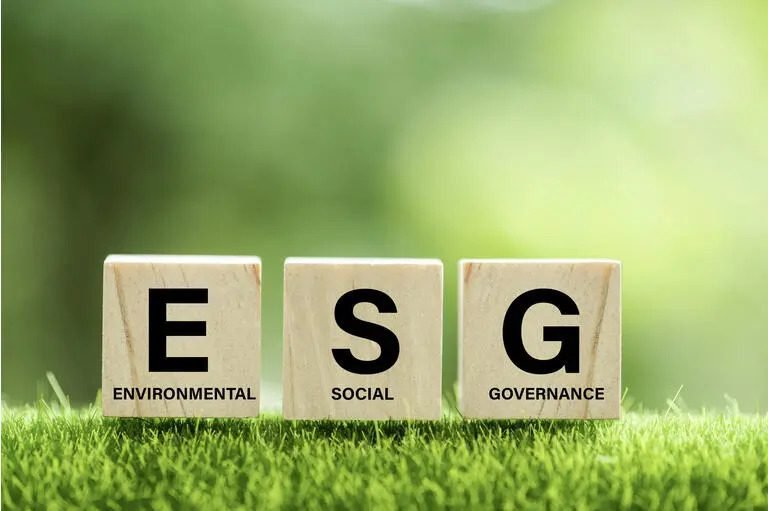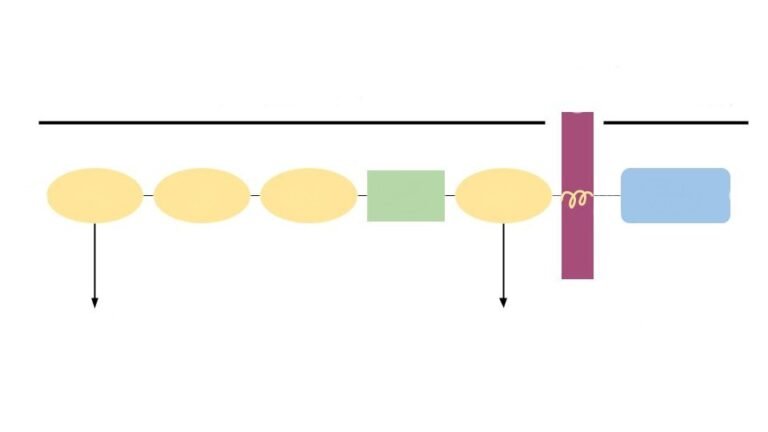An ESG framework is a systematic approach for identifying, assessing and integrating the economic, environmental and social impacts of a business on society as well as the environment. It can be used for setting goals, determining policies, implementing strategies and more! In some cases, ESG frameworks can identify risks that can have a negative impact on an industry or even across industries. Some risks may be company-specific while others may be industry-wide. And using a framework to write a sustainability report is the first step in measuring your company’s sustainability.
ESG frameworks help companies and investors to monitor high-level progress and track key factors that have a significant impact on the business. It can provide intelligence to inform decision making, which is especially helpful for companies with a commitment to sustainability.
- What are the benefits of using an ESG framework?
- What are some challenges of using an ESG framework?
- What does an ESG framework include?
- What are ESG reporting standards?
- How many ESG reporting frameworks are there?
- What is the best ESG framework?
- Is ESG reporting mandatory?
- What should be included in an ESG report?
- What does SASB Mean?
- How do good ESG practices help companies?
- FAQ
What are the benefits of using an ESG framework?
The benefits of using an ESG framework are that the company can use this information to identify opportunities for continuous improvement in order to create a long-term sustainable business. It allows companies to focus on their strengths and take advantage of emerging trends.
What are some examples of the benefits?
Some examples are identifying risks, improving performance management systems, building assets, adding value through products or services, driving sustainable business practices, and generally managing a sustainable business.
What are some challenges of using an ESG framework?
Some challenges companies might face include the level of expertise required to use an ESG framework, data availability that is on par with management expectations, and identifying key metrics.
What does an ESG framework include?
The framework works by using a series of questions or criteria that determine an organization’s level of effectiveness in terms of its economic, environmental and social performance. ESG provides a framework to make sure companies take these issues into account when making important (International Financial Reporting Standards) decisions and can be used as a tool for measuring performance.
What is ESG?
ESG is known by other names, such as environmental, social, and governance (ESG) or sustainable development reporting. It can also include topics like human rights, diversity and inclusion, and philanthropy, which is a charitable giving program.
ESG reporting is a way for companies to communicate their efforts on corporate social responsibility and sustainability in order to be accountable to society. ESG has gained traction among investors who view it as an indicator of long-term financial value creation, especially because it can reduce costs, provide opportunities for innovation, and more.
A framework is a set of constructs that are used to study something. There are many different frameworks that have been created, but they can be categorized into two main types: social and natural sciences. For the social sciences, frameworks are often based on theories or concepts to help understand certain behaviors. This is because social science needs an individual perspective in order to fully be studied. Natural science frameworks focus more on data acquisition strategies and experimental design. So, what is an ESG Framework? It’s a complex method for analyzing investments which helps investors better understand environmental, social, and governance-related issues within companies’ corporate activities.

What are ESG reporting standards?
With ESG, there are many different reporting standards that can help investors and stakeholders understand an organization’s activities and performance. Some examples of these include:
1. United Nations Global Compact – It is a set of principles aimed at encouraging businesses to adopt sustainable and socially responsible policies.
2. OECD Guidelines for Multinational Enterprises – These guidelines establish expectations for companies that are involved in developing international trade relationships.
3. International Organization for Standardization (ISO) 26000 Standards – There are four parts to this standard. Part 1 is the Guidelines. Part 2 is the Foundation for ongoing improvement. Part 3 is an assessment tool and part 4 provides guidance on communicating this information.
4. Global Reporting Initiative (GRI) Standards – These standards are meant to provide consistent global terminology for sustainability reporting, but they can also be used by organizations internally as a way to assess their performance.
These organizations may provide guidelines on how they want companies to report, including the financial statements and the narrative. The guidelines define each component of ESG, such as human rights or philanthropy, so it is clear what activities or initiatives can be included under them.
You can’t improve what you don’t measure.
Free Verified Carbon Calculators.
Erase Your Carbon Footprint in less than 5 Minutes
Personal Carbon Footprint Calculator
Business Carbon Footprint Calculator
How many ESG reporting frameworks are there?
There are many different standards and frameworks that can be used to assess an organization’s performance in terms of ESG. The Global Reporting Initiative (GRI) has created a list of over 160 reporting initiatives, but many organizations use one or more standards at the same time because they provide slightly different information.
For example, some companies might report their performance based on the GRI Sustainability Reporting Standards for their narrative but might use the United Nations Global Compact Principles for their financial statements.
What is the best ESG framework?
There are many different frameworks and organizations to keep track of, including industry-specific groups like The Dow Jones Sustainability Group (DJSI) or CDP. There are also reporting frameworks that are specific to geographic regions like the Global Alliance for Banking on Values in North America. What matters is that you choose an ESG framework and reporting structure (if any) that works well for your company and fits into your budget because it’s no use reporting or assessing performance if there’s nobody reviewing or understanding the data!
What is ESG in financial reporting?
When it comes to financial reporting, some investors use ESG as a way to improve their investment decisions. They either divest from all non-supportive companies or invest in those that do a good job in a specific area, such as carbon emissions reduction. In the future, they might also look at how sustainable legal arrangements are impacting shareholder value.
In fact, there is debate in the financial world about whether groups like G4 and Principles for Responsible Investment (PRI) should hold a bigger role. While there are different views, many investors recognize that ESG reporting is an important part of a company’s activity because it not only provides better environmental, social, and governance information but also helps to set long-term goals and strategies.
How is ESG reporting done?
The term ESG is relatively new when it comes to business, but the underlying ideas are not. It’s taken many different forms in different countries and cultures for decades. For example, some organizations may use the same reporting framework but approach social responsibility very differently internally. Others might have one common framework that all their subsidiaries or companies around the world follow. There are also some companies that report their performance according to one framework but implement strategies based on another.
The main point is that ESG reporting is a way for organizations to show how they’re integrating sustainability into their management practices and it’s an important part of the business cycle – not just an afterthought!
Is ESG reporting mandatory?
ESG reporting is only mandatory in some countries (like the UK), where it is recognized as a legal requirement. For example, under the UK Corporate Governance Code, all companies with over 250 employees must report on their annual financial statements using one or more GRI-approved frameworks or codes of practice.
But in other countries like South Africa, ESG reporting is voluntary and not enforced by law. That doesn’t mean companies don’t do it, but the guidelines and requirements for reporting might vary by organization. The same applies across different continents and regions because each one has its own laws about what must be reported, if at all.
For instance, in the United States, companies are not required to report on ESG performance but it can be done under the US Sustainability Accounting Standards Board (SASB) when developed and adopted.
In Canada, ESG reporting is not legally enforceable either but there are many industry-specific guidelines that companies can follow. If they report according to them, it helps them meet their customers’ or investors’ expectations and make the business more sustainable in the process.

What ESG framework should I use?
When it comes to selecting an ESG framework for your organization, it’s essential that you find one that works for you and has good reporting standards. Fortunately, there are many ESG frameworks to choose from such as the Global Reporting Initiative (GRI), PRI, or ISO 26000:2010.
What should be included in an ESG report?
The first step is to decide what the main focus of the framework should be – environment, social, or governance. For example, G4 focuses on environmental and social aspects while PRI takes a more holistic approach to all three issues.
Next, you need to decide if the framework is appropriate for your size company – big or small. If it’s too specific, it may not work for everyone in your organization so consider other options. It’s also important to understand what the reporting standards are and how they work so you can follow them appropriately.
Finally, look at the data provided by the framework and decide if it’s really relevant or not. You may find that there is some information you don’t need and other sections that require more detail depending on your industry.
When all is said and done, you should have a framework that’s easy to understand, easy to implement, and fits well with your company’s plans.
Who is the best ESG data provider?
The key ESG data providers include Bloomberg, Trucost, and Sustainalytics. As for the best one, it depends on your company’s individual needs. For example, if you’re looking for data around the environmental issues of a company then Sustainalytics is a great place to start, but Trucost has better indicators for social and governance-related issues.
What ESG term should I use?
There are so many ESG frameworks available these days that it’s difficult to keep track of them all! For example, the Global Reporting Initiative (GRI), PRI, and ISO 26000:2010 provide guidelines for reporting on sustainability issues. However many companies base their frameworks on the GRI.
What is ESG disclosure regulation?
ESG disclosure regulation is an act that lists requirements for companies to report on ESG performance. It’s not enforceable by law (yet), but can be used as a reference if other regulations, like the Corporate Governance Code, are enforced in your country.
Who regulates ESG?
ESG is regulated by a number of bodies, both private and public. For instance, the Global Reporting Initiative (GRI) was set up by the United Nations to ensure consistency in how companies report on ESG performance while PRI is a collaboration between investors and businesses that helps them implement sustainable strategies. In Canada, reporting is mostly enforced by industry associations such as B-Lab (benefit corporation) and the Canadian Association of Accredited Mortgage Professionals. In the United States, it’s enforced by the US Sustainability Accounting Standards Board (SASB) which adopts and develops industry-specific sustainability standards.
Who are ESG data providers?
There are also third party service providers like ESG data firm MSCI, which can provide companies with information about how they compare to their competitors regarding the three pillars of sustainable development.
In fact, there are different ESG reporting regulations around the world that companies must follow depending on where they operate and who their primary stakeholders are (corporate social responsibility (CSR), investors, customers, etc.). Thus, it’s important to check your region’s ESG regulatory environment before selecting an ESG framework.
What does SASB Mean?
SASB stands for the US Sustainability Accounting Standards Board which sets standards for reporting on ESG performance. For example, companies like Coca-Cola report their ESG data based on the SASB framework to ensure they are transparent about their social, environmental, and governance practices.
A few years ago, SASB identified three key areas of interest that investors look for when making investment decisions: environment, social, and governance (ESG). These key areas were then divided into 11 sectors.
What is the SASB framework?
The SASB framework is a standard for reporting on ESG performance. It breaks down the three pillars of sustainable development into 42 indicators that are based on financial measurements so that companies can better integrate sustainability into their daily business practices. Even though it’s not enforceable by law, SASB is an excellent reference point for other regulations in North America because investors are using it to manage their investments.
For example, investors are likely to invest in companies that voluntarily report on ESG performance using SASB because they’ll have a better idea of how the company is running thanks to its financial data. In fact, SASB is working with regulators in Canada and the United States so that reporting will be mandatory for public companies.
What is MSCI USA ESG?
MSCI stands for Morgan Stanley Capital International and it’s one of the leading providers of ESG data. It has created a series of indices to measure companies on their ESG performance which are used by investment firms around the world.
MSCI USA ESG is an index that includes stocks traded on the New York Stock Exchange (NYSE) and NASDAQ, as well as American Depository Receipts (ADRs). It provides an objective, rules-based way to track US large and mid-cap companies that have high ESG standards.
How do good ESG practices help companies?
ESG strategies can help your company by improving its image and brand reputation; gaining a competitive edge over the competition; increasing its capacity to attract and retain talent, clients, or customers; and building stronger relationships with partners and stakeholders.
In addition, sustainable business practices can help companies reduce their operational costs by: reducing waste and resource use; saving time through green strategies that optimize processes; supporting a strong innovation culture which helps businesses stay up-to-date with market trends; encouraging direct dialogue with stakeholders, especially employees.
FAQ
What is a middle market company?
A middle market company is an organization with annual revenues of between $10 million to $1 billion.
What is an ESG platform?
An ESG (Environmental, Social, and Governance) platform provides data, analytics, and reporting services to help organizations manage their sustainability initiatives.
What is a sustainability platform?
A sustainability platform helps organizations track and measure their impacts on the environment and social well-being in order to promote greater transparency and accountability.
What are the benefits of ESG for companies?
The benefits of adhering to ESG standards include improved risk management, increased customer loyalty, better access to capital markets, enhanced brand reputation, and more efficient resource use.
In summary on climate-related financial disclosures
To summarize this article, ESG frameworks are a way of systematically integrating sustainable practices into your company’s management approach. By using a framework, companies can identify, assess, and integrate environmental, social, and governance factors into their business decisions to ensure they’re making positive impacts on society as well as the environment.
More good reading to be had here…
Caveats, disclaimers, ESG frameworks & the global reporting initiative
At ESG | The Report, we believe that we can help make the world a more sustainable place through the power of education. We have covered many topics in this article and want to be clear that any reference to, or mention of climate-related financial and sustainable development around responsible investment or related financial disclosures by institutional investors or their environmentally sustainable economic activities in the context of this article is purely for informational purposes and not to be misconstrued as investment or any other legal advice or an endorsement of any particular company or service. We highly recommend that investors use a financial advisor, certified financial planner, sustainable development goals, or investment professional before entering the markets. Thank you for reading, and we hope that you found this article useful in your quest to understand ESG and sustainable business practices. We look forward to building a sustainable world with you.
You might also want to read
What is the Global Reporting Initiative?
What is Diversity Equity and Inclusion?

Dean Emerick is a curator on sustainability issues with ESG The Report, an online resource for SMEs and Investment professionals focusing on ESG principles. Their primary goal is to help middle-market companies automate Impact Reporting with ESG Software. Leveraging the power of AI, machine learning, and AWS to transition to a sustainable business model. Serving clients in the United States, Canada, UK, Europe, and the global community. If you want to get started, don’t forget to Get the Checklist! ✅
